If you still don’t have a company handbook in place—don’t worry, you are not alone.
Although it is advisable to have one to legally protect your business and set expectations for your employees, creating it from scratch may seem like a huge undertaking.
However, it doesn’t have to be.
To make your job easier, we’ve compiled a short list of user-friendly practices and important items you can put in your handbook to make it as informative and useful as possible.
Let’s take a look at them!
Basic Terms of Employment
When crafting an employee handbook, It’s always a good idea to start with the basic terms employees agree to when accepting a job.
It’s important to list these basics, even if they don’t seem like crucial information at first glance.
With this information listed and available to everyone, you're taking an important step to ensure that your hiring practices and basic terms of employment are transparent and accessible to everyone.
In addition to that, you would be surprised how much valuable work time an employee can waste to find the answers to these basic questions.
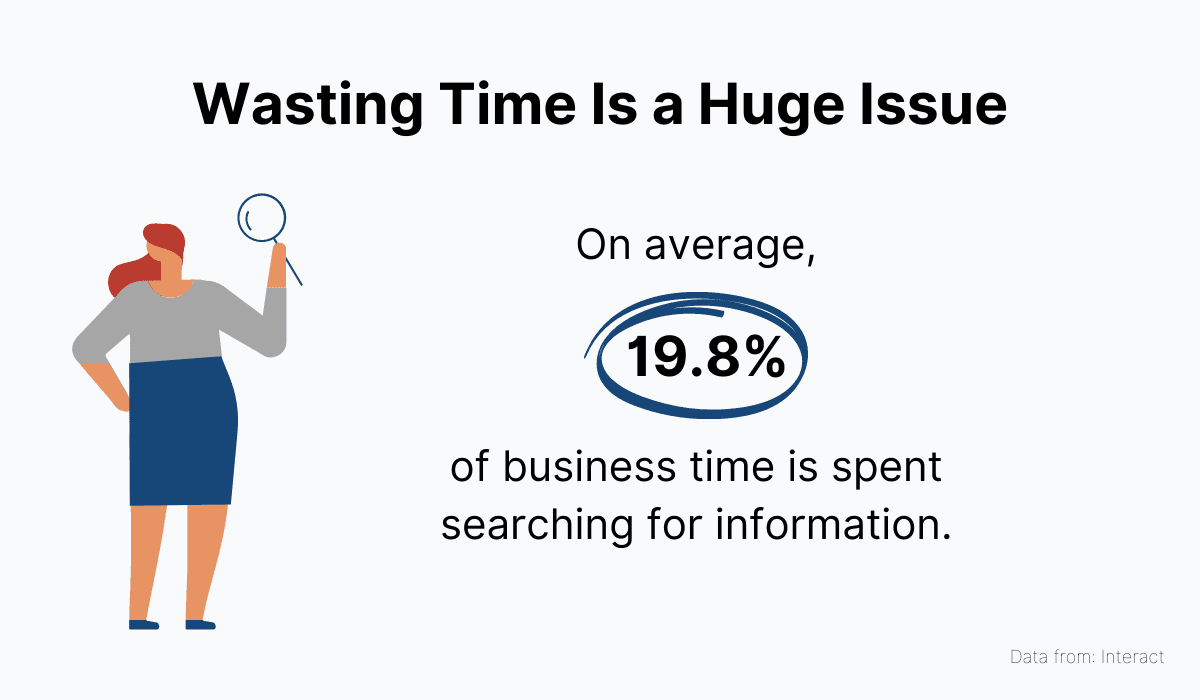
Source: Archbee.com
To put this in perspective, 20% of the time spent looking for information every day amounts to an entire day of the workweek.
Therefore, covering the basics is extremely helpful to the new hires because it helps them navigate the rough waters of a new job position with ease.
But, if you think about it, this information can come in handy for the existing employees as well.
People tend to forget, and it’s nice to have a place where they can renew their knowledge about practical company stuff.
So what are the basic principles of working for your company? Let’s enumerate a couple of them to get a better sense of what we’re talking about.
In this segment of the handbook, you can let the employees know more about the nature of the job, the steps of the onboarding process, the terms regarding full-time or part-time employment, internships, apprenticeships, and other job classification and duties.
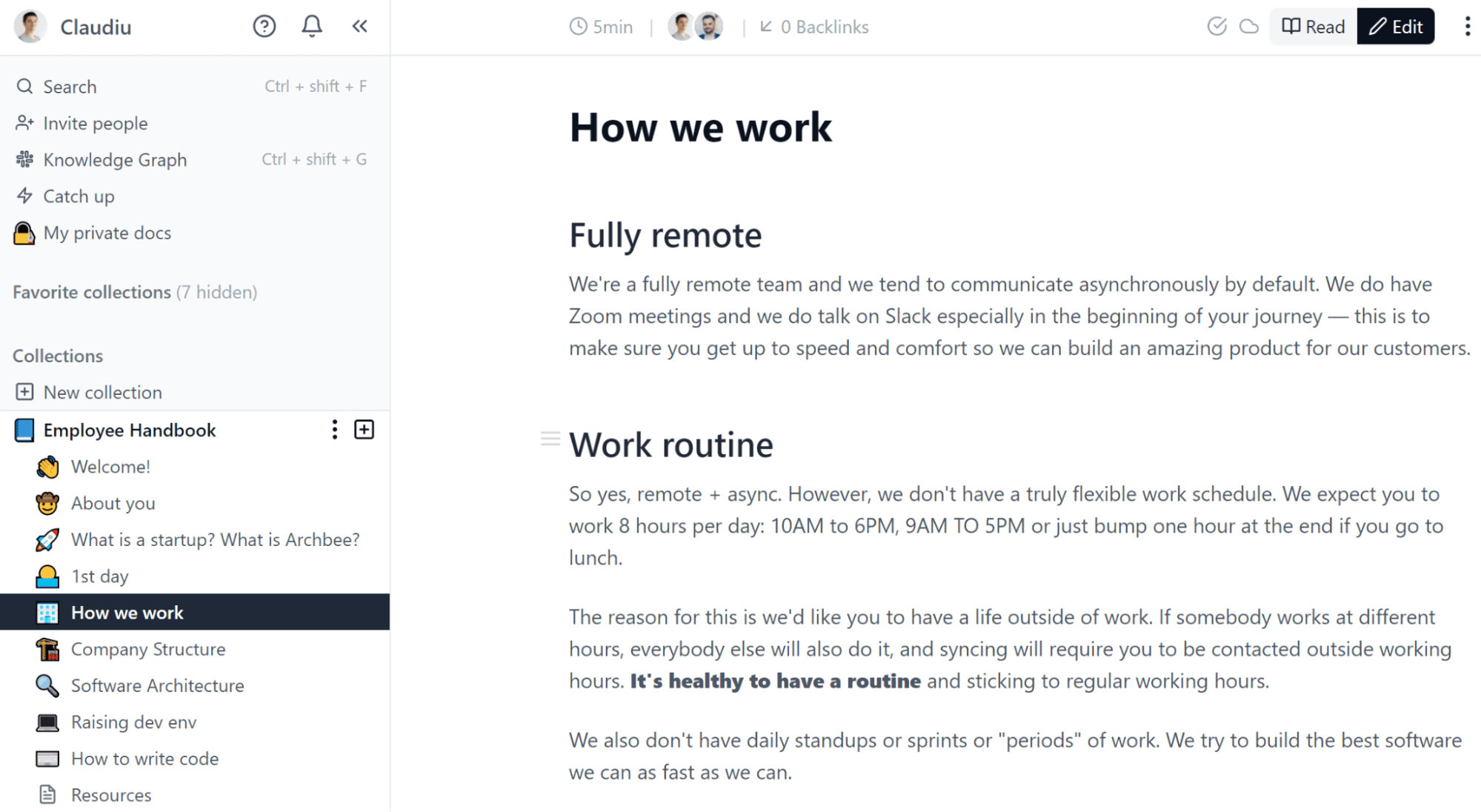
Source: Archbee.com
Maybe you’ll also want to include rules of attendance, so you don’t have to explain it over and over again. If so, this is the perfect place to bring them up.
All in all, giving this section of the handbook your full attention will help your new and existing employees tackle their day-to-day challenges more effectively, safe in the knowledge that they have a reference manual they can turn to in case they have any questions.
Workplace Policies
With the basics out of the way, it’s time to go into the details about how to regulate the conditions in the workplace.
Workplace policies are the rules and principles that make working at your company a comfortable and safe experience for your employers. They’re also the requirements you’re putting in front of your workers to make sure your operation runs smoothly.
Here’s a handy list of some of the policies most frequently found in employee handbooks:
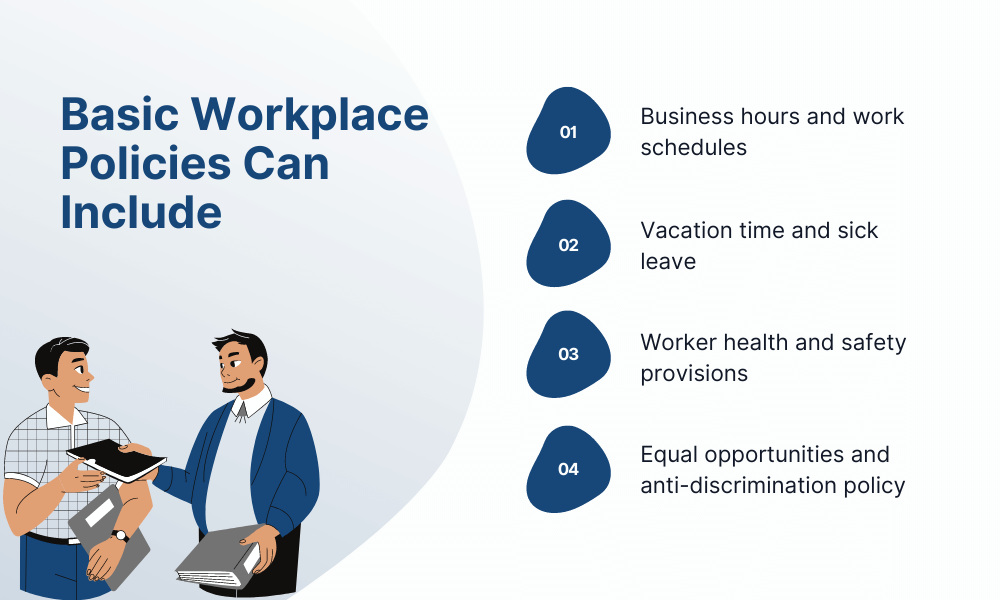
Source: Archbee.com
Another policy that’s slowly becoming a must-have for employee handbooks these days is how you regulate where your employees will be working from: the office, their home, or a combination of the two.
This policy has, of course, become necessary in light of the ongoing COVID-19 pandemic.
It has been quite surprising to watch how quickly everyone was able to switch and adjust to these new remote work conditions.
But is it actually that simple?
Is it just about having a laptop, internet connection, and kitchen table? How can remote work become more effortless? How can miscommunication be avoided?
In truth, all of these questions need a coherent answer in order to ensure work carries on as usual during these uncertain times.
Leaving nothing to chance, many forward-thinking companies have decided to create manuals specifically tailored to solve problems that arise from working remotely.
One of these companies is Growens. Their Remote Work Handbook is a good example of how a well-written manual can make a difference in avoiding the pitfalls and setbacks of remote work.
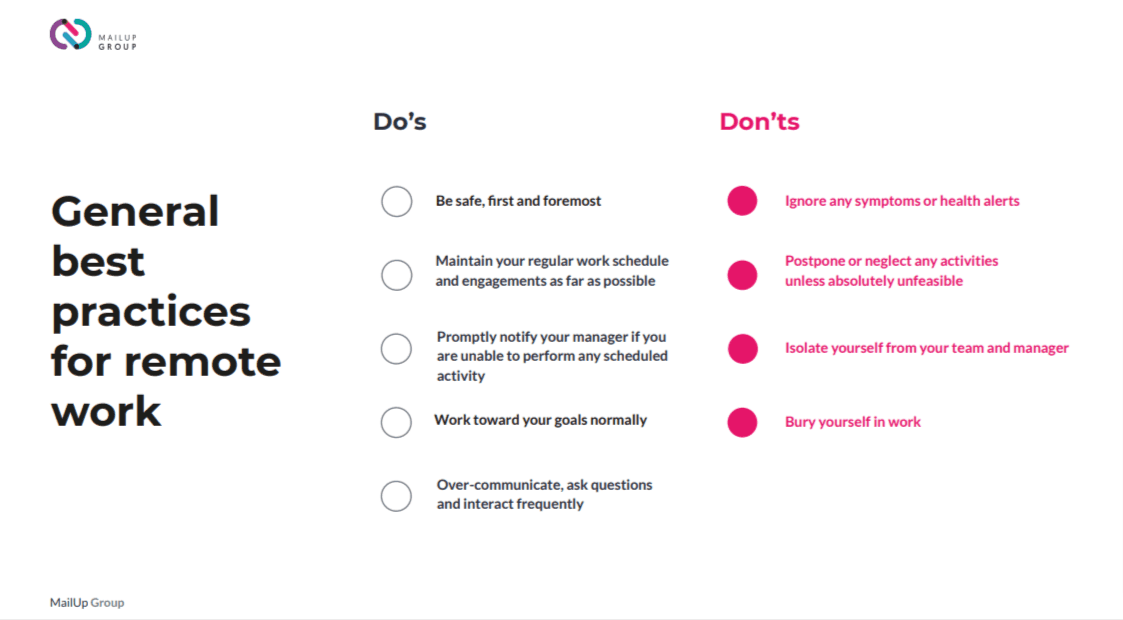
Source: Growens
The purpose of this handbook is to provide some guidance on the issues that remote workers face in their work-from-home jobs.
How to set up a workspace? How to successfully conduct a remote meeting? What apps can help employees be more organized and efficient when working from home?
They’ve covered all of these topics to give employees the means and motivation to be effective while dealing with the challenges of remote work.
Interestingly, Growens also included advice on handling the psychological and emotional aspects of this type of work, to help employees stay positive as they traded the office for a home laptop.
This example is a testament to just how much thought and effort goes into creating company policy and how complex the process can be.
To avoid confusion and any missteps in everyday work, make sure your company policy is prominently featured in your employee handbook.
Code of Conduct
This part of your employee handbook states which behaviors are deemed appropriate at work, setting ethical standards for your employees.
Allowing ethics to be interpreted at will because there’s no official record of them is a bad practice, one that’s sure to cause a lot of trouble and conflict down the line.
On the other hand, with a clear code of conduct, everyone knows how to react in any situation, and finding excuses for undesirable behavior becomes much more difficult.
While creating this section of the handbook, try to answer some of the following questions:
- Do you want your employees to dress casually, or do you opt for a more suit-and-tie workplace?
- How do you expect your employees to conduct themselves on social media?
- What are your thoughts about piercings or tattoos?
- What disciplinary actions are you going to take in case of harassment?
Many of these regulations are universal, but some codes of conduct are very much dependent on the industry you operate in, the legislation of your region, as well as special circumstances.
Take the company dress code, for example. During the pandemic, many companies, especially in the tech industry, switched to working entirely remotely, which suddenly rendered dress codes irrelevant.
After all, when employees work from home, pajamas, T-shirts and sweatpants are more than acceptable work attire.

Source: SHRM
In this situation, there is no need to outline how the employees should dress in the workplace. But, on the other hand, it might be a good idea to instruct them on what is acceptable professional wear during a zoom call with a client.
As you can see, codes of conduct work best when they’re adapted to the current situation and context of your workplace. So think about your company's requirements, and adjust this section of the handbook accordingly.
Some more serious issues that should be covered by the code of conduct section of your handbook include:
- Discrimination
- Harassment
- Bribery
- Substance abuse
With rising awareness of different forms of discrimination in the workplace, the right to equal treatment has nowadays become a pillar of a productive and healthy work environment.
Although tolerance for discrimination is today at very low levels, it’s still very present in the workplace, so it’s definitely worth the effort to address it head-on.
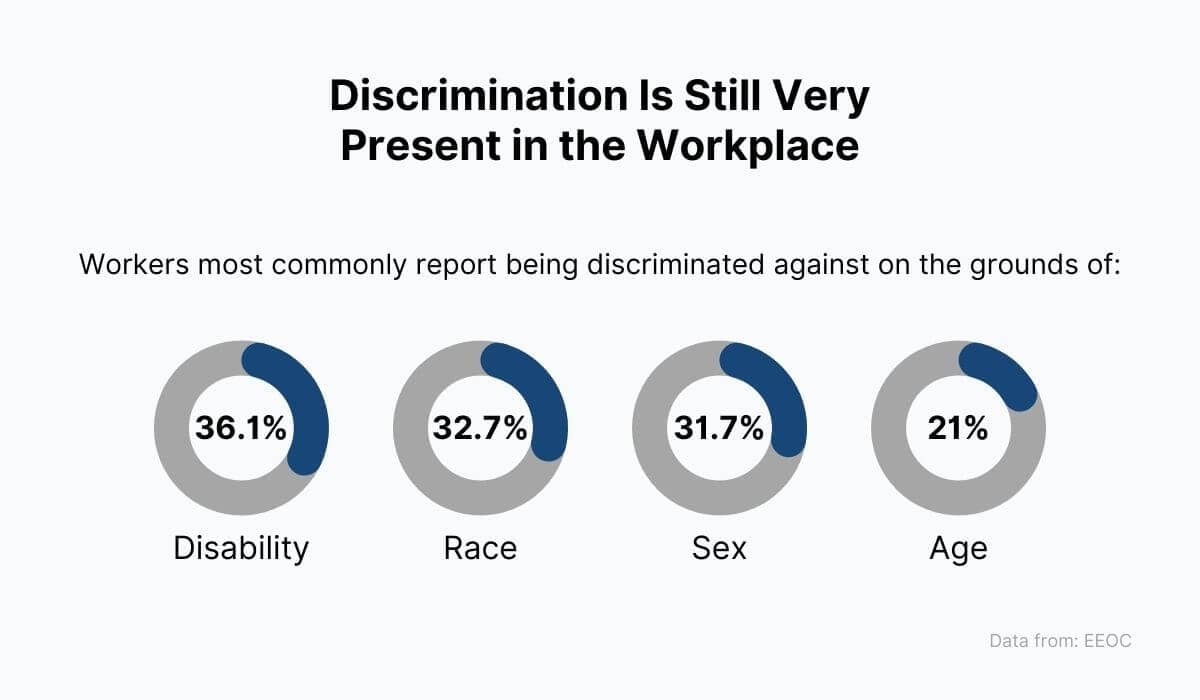
Source: Archbee.com
Therefore, to do your best to prevent it from happening, start by setting anti-discrimination rules in your handbook.
Emphasize that the culture of diversity, meritocracy, and respect is something you hold fast to in your company.
Employee Benefits
Employee benefits are probably everyone’s favorite section of the company handbook.
Let’s face it—whether it’s a company car, an increased number of vacation days, or a free gym membership, employees simply love benefits. We all do. It’s in our nature.
However, employees are often unaware of all of the benefits the company is offering. Without access to information, it’s not uncommon to hear people complain they didn’t know they were entitled to wellness treatments, private dental care, or even a company smartphone.
To avoid misunderstandings, it’s good practice to list all your benefits and perks in your company handbook, as well as your company web page.

Source: Salesforce
For example, Salesforce’s benefits program starts with great health insurance and extends into wellness programs and self-care.
Before we dive deeper into this topic, let’s see the benefits that are usually covered:
- medical, dental, and life insurance
- work from home and flexible hours
- bonuses and rewards
- professional development
- paid time off, vacations, and parental leave
The benefit you should probably start with is health insurance.
Although a medical plan has become one of the standard benefits in most companies, good health insurance is still one of the most effective ways to attract new talent and persuade existing employees to stay with the company.
Generally, health benefits come in the form of medical, eye, and dental insurance, but some companies even include fertility coverage, health checks, and mental health support.
Another benefit employees will appreciate is paid time off (PTO). In fact, 9 out of 10 employees reported that PTO is important for their overall job satisfaction.
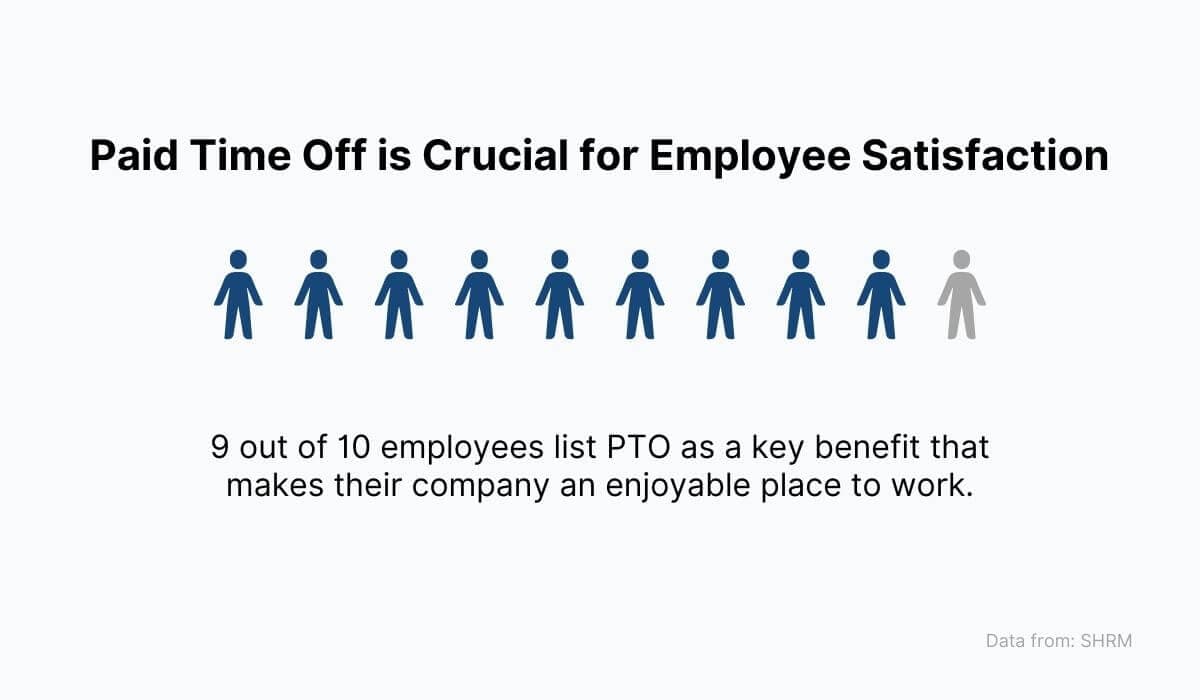
Source: Archbee.com
That’s why this part of the benefits section needs special attention in your handbook. Inform the employees about the number of vacation days they have the right to, and explain the overall procedure of taking the days off.
The same goes for sick days, parental leave, and perks such as sabbaticals or time for development and training. Get them out in the open, so everyone is fully aware of their rights and procedures they need to go through to acquire them.
For example, Trello lists their company benefits inside their own platform, boasting an exceptional education and development program that includes books, conference visits, and tuition reimbursement.
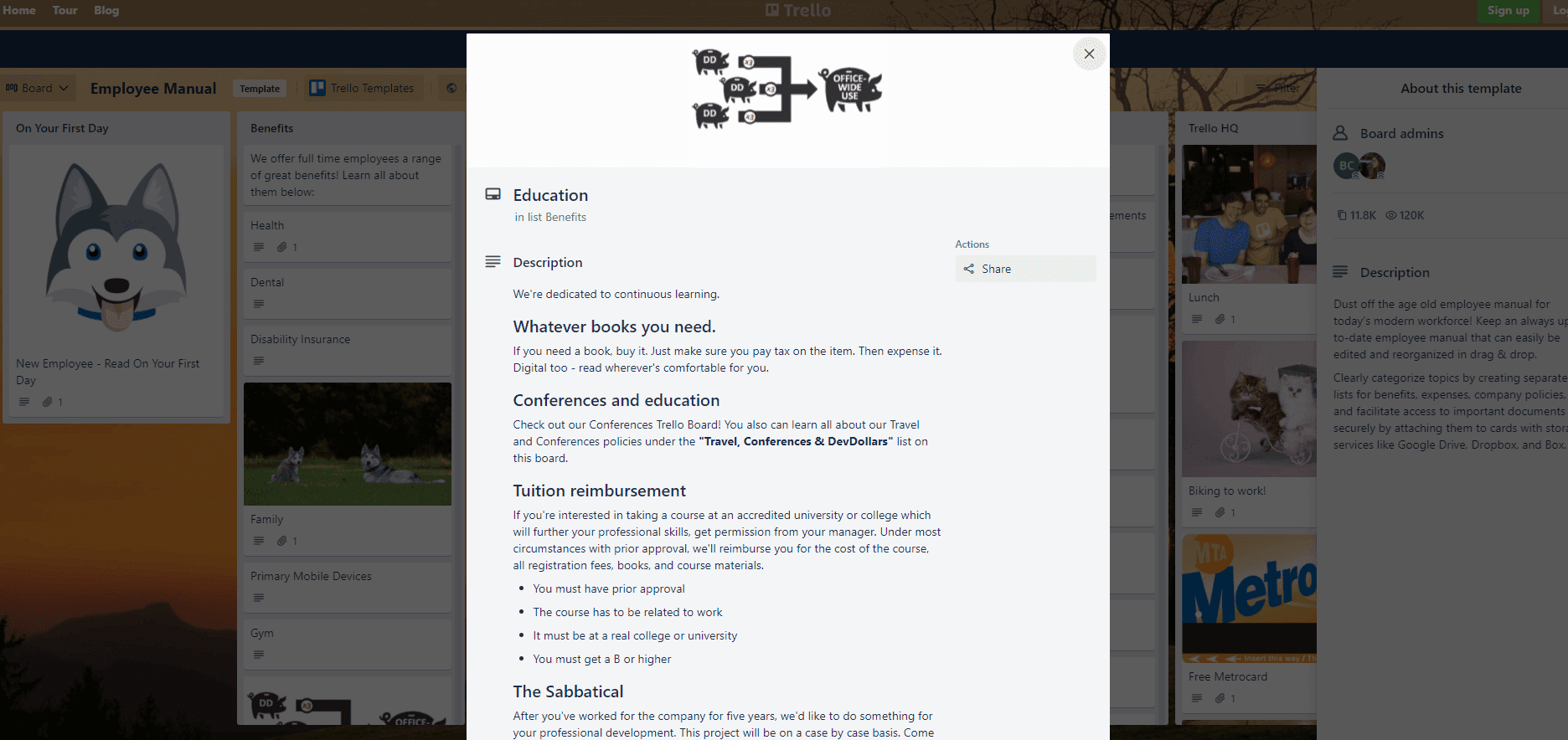
Source: Trello
Using their own platform to house their employee handbook is an excellent idea, although it’s not a feasible option for everyone.
If that’s the case for your company, another great way to go about it would be to create your employee handbook using quality knowledge base software, such as Archbee.
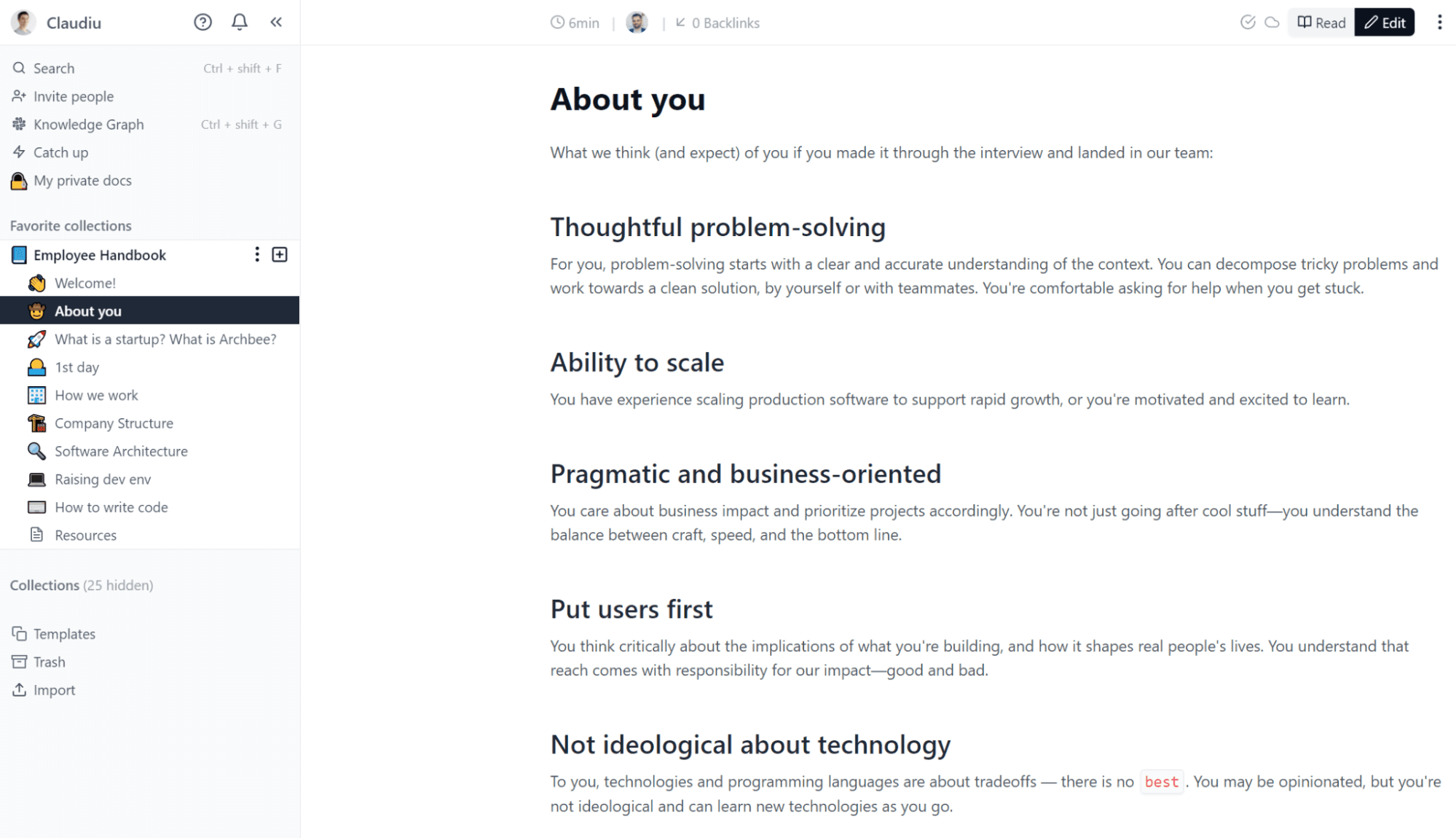
Source: Archbee.com
With Archbee, your employee handbook is always available online, meaning your employees can quickly consult it when they need to.
Plus, your documents can be easily edited, ensuring the information contained in your handbook is always fresh and relevant.
Remember that company benefits can be a strong motivator for employees to come to work for you or stay with the company for years to come. So if you are offering some unique ones, your employee handbook is the perfect place to brag.
Employee Compensation
Smart employers are always trying to find new ways to attract stellar employees and rising talent, and one of the ways to achieve that is by offering competitive salaries.
We all want to get paid for our work, so making sure employees get paid adequately should always be high on your list of priorities.
A salary that reflects our experience and capabilities does the trick when it comes to our motivation and satisfaction at work. It can also have a more far-reaching effect on worker productivity and retention.
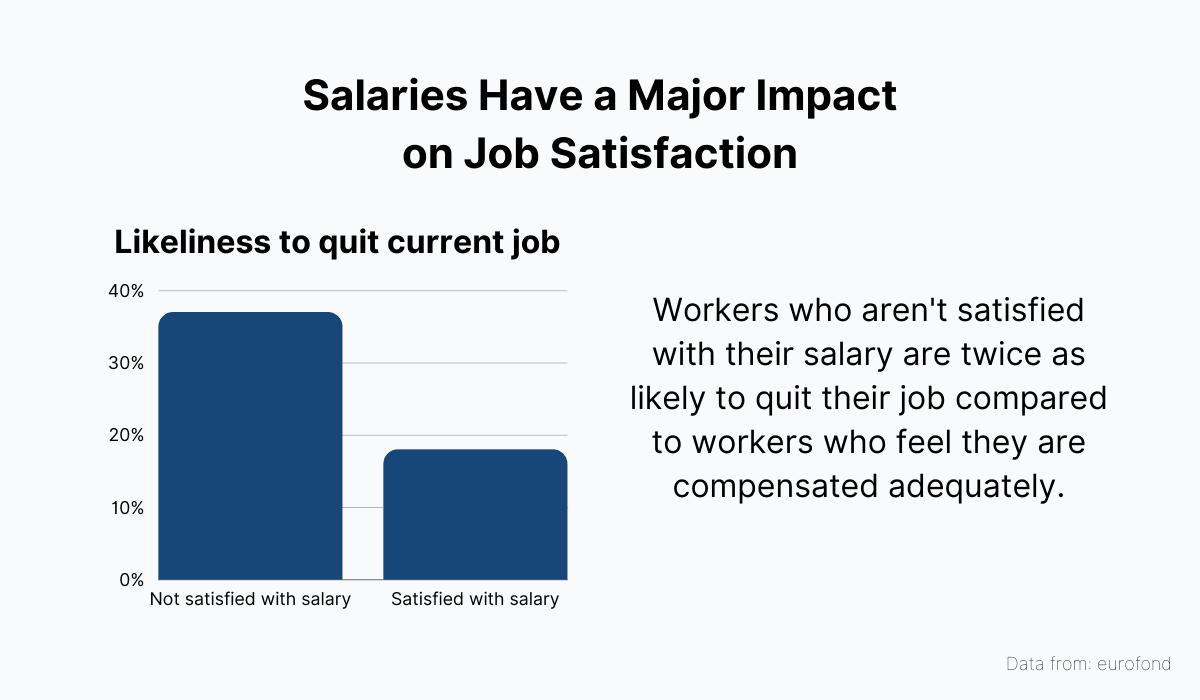
Source: Archbee.com
Before we get into the nitty-gritty of employee compensation, let’s see what exactly falls into this category.
Namely, it covers the following areas:
- Salary
- Bonuses and awards
- Commissions
- Overtime work
When crafting the compensation section of your company handbook, keep in mind that the single largest component should be salary.
With that in mind, let’s go over a few best practices to include here.
Some employees are hired to work full time, while others work by the hour, so make sure you mention how your company calculates everyone’s pay.
Also, state how employees will receive their money—whether it’s after two weeks or at the end of the month.
For employees who are paid by the hour, outline how they should check in and out so you can accurately determine how much you owe them. Finally, define all aspects of overtime work.
Remember that this kind of practical information shouldn’t be underestimated. In other words, you shouldn’t assume it’s common knowledge.
Some companies, like Buffer, even list their salaries transparently on their websites and employee handbooks, along with the formula for calculating each individual salary.
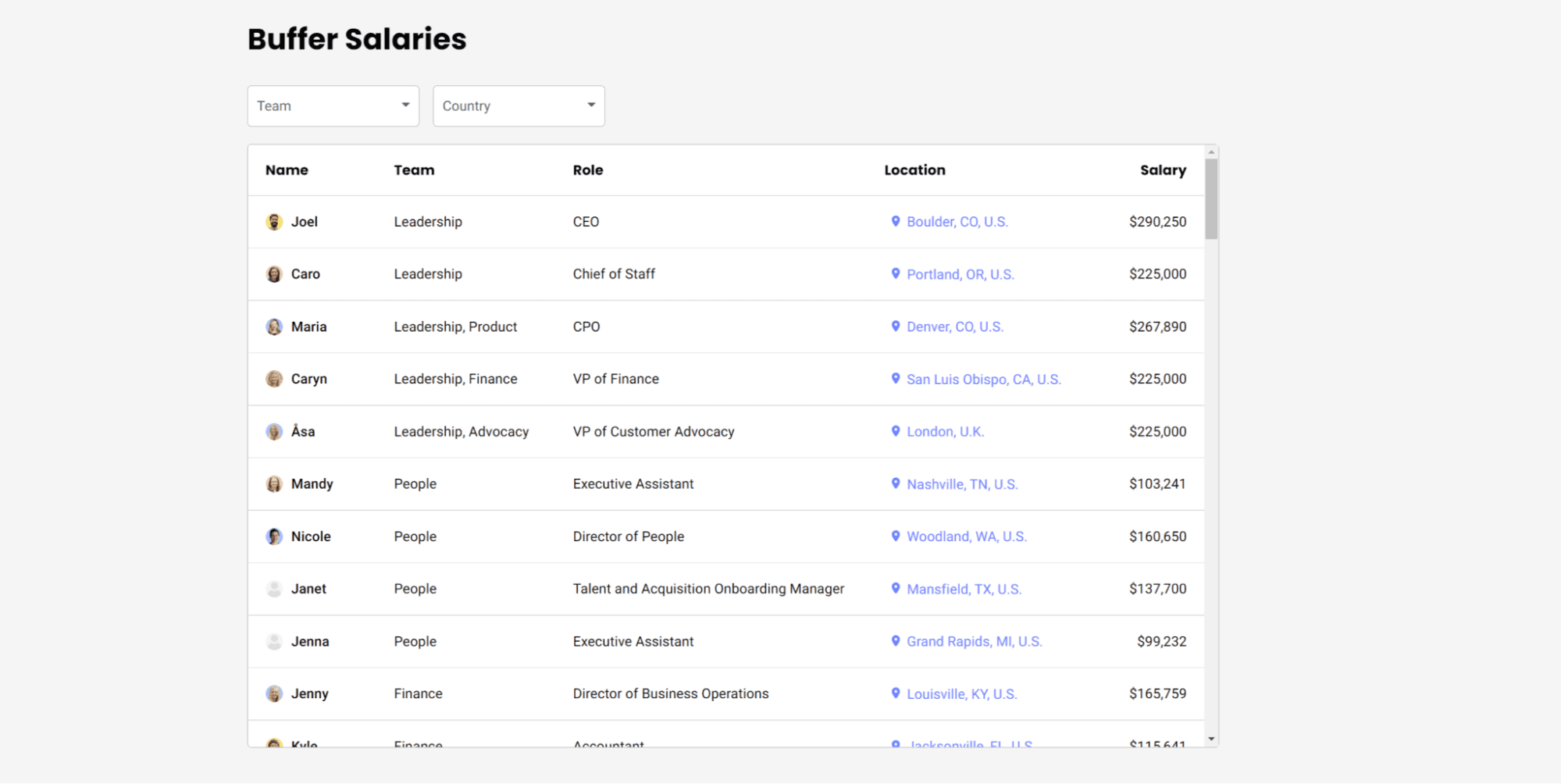
Source: Buffer
Many employees, especially new hires, can get confused by too much information. Therefore, being able to refer back to the handbook can make them feel more secure and relaxed during the first weeks of employment.
Next, cover all the bases with regards to bonuses, commissions, awards, and other aspects of your compensation package that don’t include salary. This form of additional payment can be really useful to motivate employees to go above and beyond the call of duty.
Bonuses are usually paid at the end of the year in a single lump sum, but that’s not always the case. For example, ad agencies commonly pay out bonuses to teams who win a pitch.
On top of that, many industries offer commissions when an employee makes a sale. Take real estate brokers, for example. Usually, when they drive sales, they are rewarded with a commission.
Bear in mind that it’s definitely worth being honest about sensitive issues such as salary, bonuses, and compensation.
Open and straightforward communication without hidden agendas can make a big difference in building trust and loyalty between the employer and the employees.
Employee Offboarding
Many companies take the time and effort to go through the onboarding process but often neglect offboarding as something less important.
However, a positive farewell experience can have a considerable impact on the reputation of the company and the atmosphere among the peers.
If your offboarding procedure consists only of a handshake and a walk to the door, you’ll send a message that you don’t value your employees.
We live in a world where negative word-of-mouth or a bad Glassdoor review can go a long way in making you seem like an employer that is better to avoid.
And one of the ways you can prevent that is by giving special care to creating your offboarding policy.

Source: Glassdoor
Offboarding can happen either because of resignation or termination. Whatever the reasons, it’s advisable to describe step-by-step procedures for any of these situations in your handbook.
First, you won’t leave your employees second-guessing what will happen when you decide to part ways.
And second, you’ll make sure that there are no loose ends. After the separation, you won’t have to chase your former employees to return the office keys or client folders, for example.
But how can you do that, you may ask?
The rule of thumb here is that an open and honest approach will allow you to let go of your employees on good terms and give you a clean slate to easily move on to looking for a new hire.
In practice, this means that you can request departing employees to wrap things up before their last day.
You can ask them to:
- Give advance notice (usually two weeks)
- Finish their projects
- Return the company equipment (mobile phones, laptops, etc.)
- Pass on important knowledge to others
- Help in finding the best replacement
And on your part, you’ll take care of their last paycheck and other paperwork, deactivate passwords and other system access, and conduct an exit interview to gather valuable feedback on why the employee is leaving.
For a seamless transition and a fast process that leaves all parties satisfied, it might be a good idea to include an offboarding checklist in your handbook, like the one below:
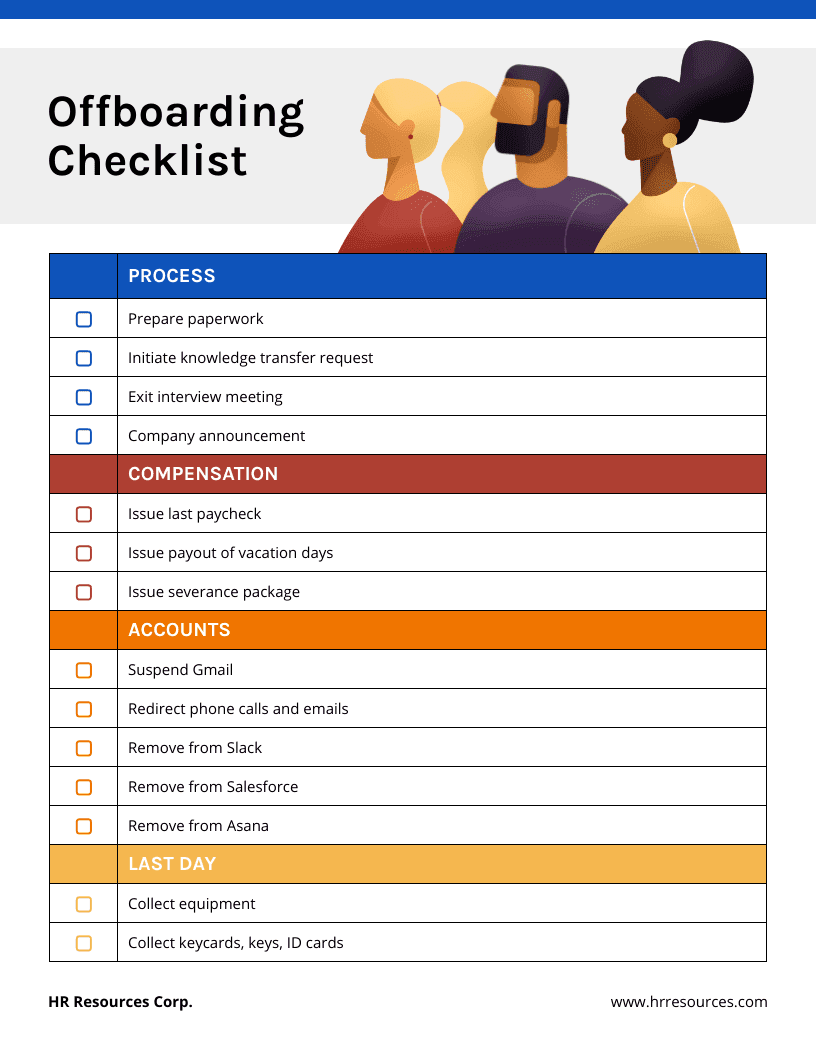
Source: Venngage
Things can get more complicated when it comes to termination because this part of the handbook can be legally sensitive.
For instance, you can describe what disciplinary measures you’ll take in case of employee misconduct or breaking the rules outlined in the handbook.
That way, if an employee behaves in an unacceptable way, and you decide to terminate them, you can refer to your company handbook and argue they were informed about what makes their behavior unacceptable.
This should help you avoid lawsuits on the grounds of wrongful termination.
Losing a team member is never easy, but it does happen.
Therefore, offboarding should be a normal, systemized procedure like any other at your company. And that means it deserves a chapter in your employee handbook.
Conclusion
Assembling a company handbook isn’t an easy feat. You may even be tempted to download a template from the internet and just fill in your company data.
But remember, there is no magic formula.
You are the one that knows your company by heart and recognizes what makes it special and unique.
So try to think about the processes, features, and activities that help your company function every day and use your handbook to describe and explain them.
We hope this article will do its part in helping you achieve that.
FAQ
Frequently Asked Questions
Yes—when it’s clear and current, a handbook pays for itself.
Here’s what it delivers:
- Clarity and consistency: Sets expectations for behavior, time off, performance, compensation, and benefits so everyone operates by the same rules.
- Faster onboarding: New hires get answers in one place, reducing ramp-up time and repetitive questions.
- Less time wasted: A single source of truth cuts down on searching for policies, procedures, and contacts.
- Compliance and risk reduction: Documents required policies, reporting channels, and disciplinary steps to help prevent violations and protect the business.
- Culture and trust: Makes values, conduct standards, and inclusion commitments explicit, which strengthens alignment—in office, remote, or hybrid.
- Operational continuity: Clear guidance for common processes (PTO, expenses, security, offboarding) keeps work moving smoothly.
Bottom line: a good handbook boosts transparency, efficiency, and confidence across the organization.
